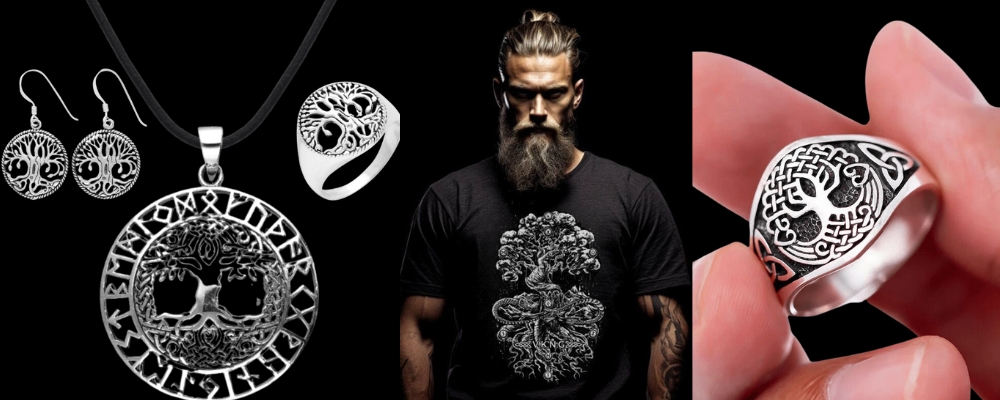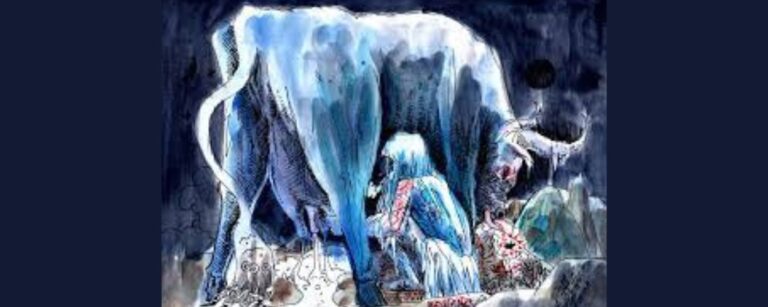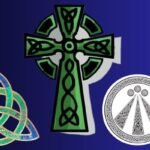
In Norse mythology, all existence emerges in the Ginnungagap, a vast primordial void. It is an important concept in Norse ideas around the creation of the world, but also its destruction. At Ragnarök, all existence will sink back into the primordial goop of Ginnungagap.
But a concept that had such importance for the beginning and end of time probably had a role to play in the world in which men lived. It could be argued that the Ginnungagap represented the limits of existence and was a liminal space between existence and non-existence. As a result, it was probably seen as chaotic, dangerous, but maybe also a source of magic and power.
Ginnungagap in the Norse Creation Myth
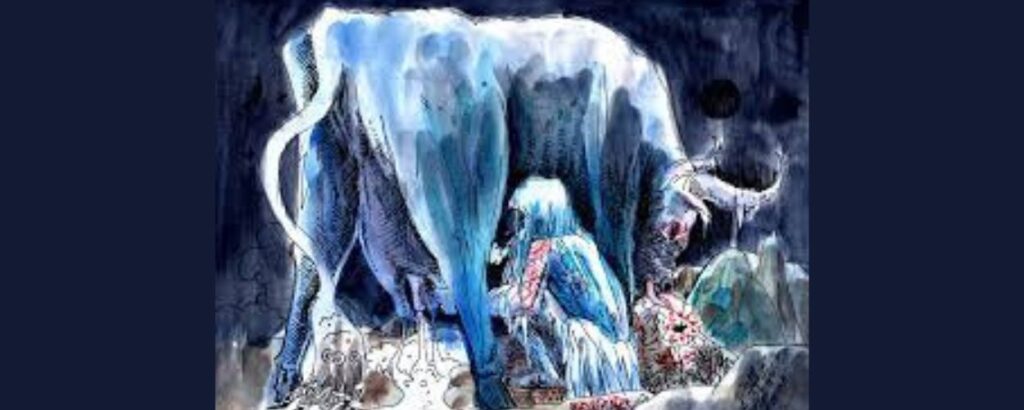
According to the Norse creation myth, before there was anything, there was a great yawning void called the Ginnungagap. The Volva seeress in the Volsuspa describes the Ginnungagap in the following way:
That was the age when nothing was; there was no sand, nor sea, nor cool waves, no earth nor sky no grass there, only Ginnungagap. [Stanza 3]
While the void was large, it was not without limits. At the south end of the void, which is the top, is Muspelheim, a world of fire and steam. At the north end of the void, the bottom, is Niflheim, a realm of ice and mist.
Over time, heat from Muspelheim and cold mist from Niflheim leached into the void. These mixed in the void and eventually created a kind of primordial goop. It was from this goop that initial life emerged.
Perhaps the first identity to emerge from the goop was the primordial cow Audhumla. She fed herself on salt lick that was also created by the goop. At around the same time, the primordial giant Ymir also emerged. It fed itself by drinking the milk produced by Audumla. Not long after, Audumla licked the first giant, Buri, out of the salt lick.
While we don’t hear much more about Audumla, Ymir, and Buri become the source of much of life. Ymir produces asexually, with further giants jumping forth from his armpits. He also produces a variety of other monsters. Buri seems to have produced the old-fashioned way and probably mated with a giantess to produce his son Bor. His son mated with the giantess Bestla to have three sons, Odin, Vili, and Ve.
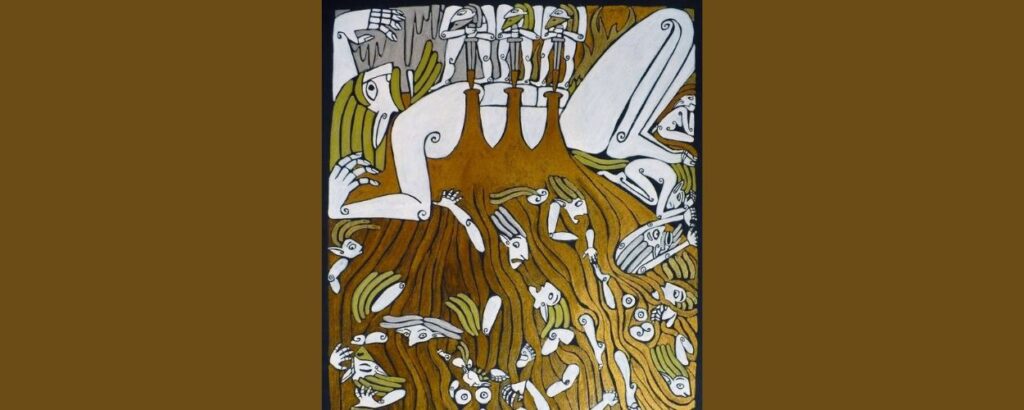
Because Ymir could reproduce so much faster than the gods, giants soon outnumbered the gods. This was a growing concern for Odin and his brothers, so they killed Ymir. This flooded much of existence with blood, which killed many of Ymir’s children and evened up the balance between gods and giants.
Odin and his brothers also used Ymir’s body to give structure to the world and shape the Norse cosmos around the great world tree Yggdrasil. This included creating Midgard and creating mankind to populate that world.
Of course, gods, giants, and men are not the only beings to exist in the Norse cosmos. There are also the elves and dwarves, and the many animals that occupy Yggdrasil such as the dragon Nidhoggr, the squirrel Ratatoskr, and the eagle that lives at the top of Yggdrasil. So, the creation myth is incomplete.
To bring the story full circle, it is said that at Ragnarök, the worlds created by Odin and his brothers will be destroyed and sink back into the waters of chaos. This seems to imply that life will sink back into the primordial goop that formed in Ginnungagap.
The Meaning of Ginnungagap
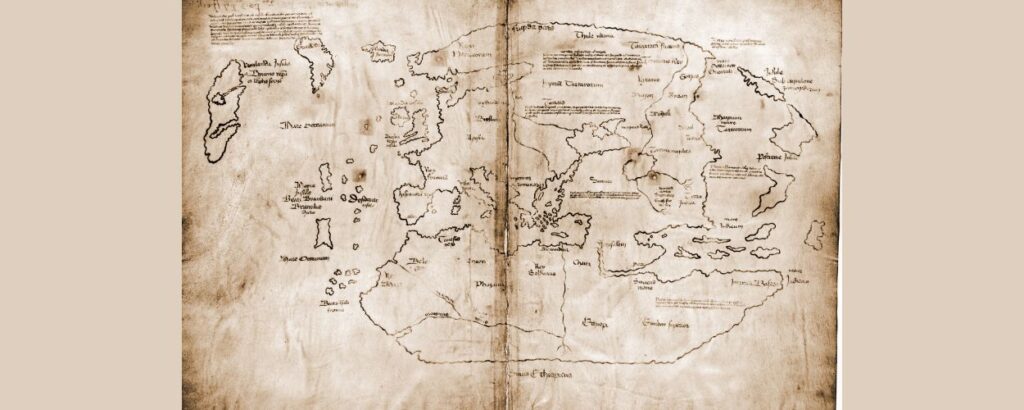
In Old Norse, Ginnungagap means more or less “yawning void” or “magic void”. The first part, “ginnunga”, conveys a sense of something being vast and having a supernatural or magical element. However, this word only appears in the context of the creation myth and not elsewhere in the surviving Norse lexicon. The ending “gap” means gap or void.
The goop that forms within Ginnungagap seems to represent the building blocks of life since all life emerges from it and sinks back into it.
The fact that the goop comes from the mixing of the elements of Muspelheim and Niflheim is suggestive of what the Norse people thought was fundamental to existence. The world of fire represents energy and activity, while the world of ice represents stillness and potential.
As the Norse people of later centuries worked to understand earlier myths, they suggested a real place in the world for the location of the Ginnungagap. 15th-century Scandinavian cartographers suggested that the Ginnungagap was based on the expanse of water between Greenland and Vinland.
While the Vikings had traversed these waters in around 1000, led by Leif Erikson, they were still relatively unknown and dangerous waters. They described the sea of the Ginnungagap being fed by the Mare Oceanum that surrounds the whole earth.
Theories About the Ginnungagap
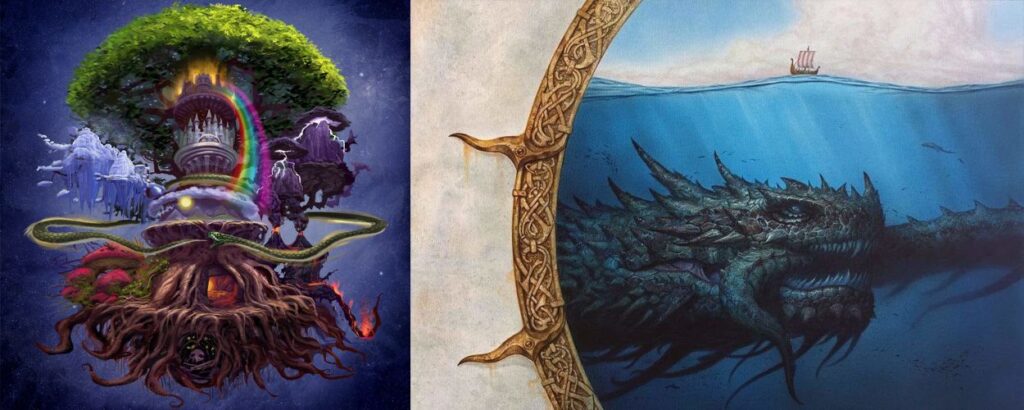
While the surviving sources do not provide any other direct information about the Ginnungagap, modern scholars have suggested that it may have had further importance in Norse cosmology.
Start with Jormungandr, the world serpent that lives in the waters surrounding the world. It is so big that it can encircle the entire world and hold its own tail in its mouth. It will only drop that tail at Ragnarök, when it will emerge from its waters and join in the destruction of the world.
The prefix “Jormun” refers to something huge and supernatural, while “gandr” describes something vastly long. However, linguist and mythologist Jan de Vries points out that the “gandr” shares the same linguistic root as “ginnunga”, which may suggest a connection between the Ginnungagap and Jormungandr.
Perhaps this suggests that the deepest waters surrounding the world, in which Jormungandr dwells, are in fact the primordial water or primordial goop from which life emerged. This could explain why Jormungandr was able to grow to such an incredible size, as he was fed by those waters.
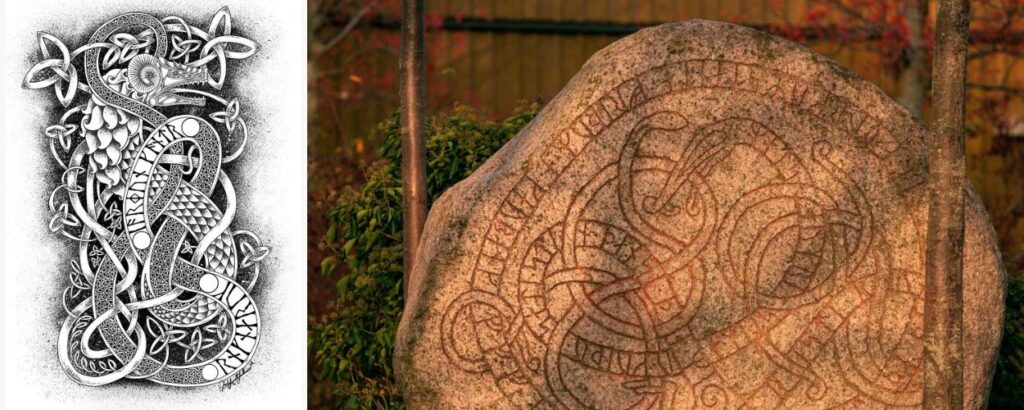
Continuing with this thought, in Scandinavian folklore, Gandir were magical entities that could be summoned to share knowledge of future events. They often took the form of wolves or serpents. Perhaps it was their connection with the creative power of the Ginnungagap that gave them the ability to know the future.
Scholar Andrea Snow connects this idea with the images of elongated serpents and wolves that wrap around themselves to create complex and beastly patterns in Norse art. It is possible that the chaos created by these bodies represented the chaotic waters of creation.
This would suggest that the Vikings considered their universe to be an island floating in a sea of chaos, and that those chaotic waters were always encroaching. They represent a threatening but powerful force.
What is the Ginnungagap?
If this theory about the Ginnungagap creating a boundary that surrounds the world and representing a liminal space between existence and non-existence is true, it represents an incredibly powerful force. It would make sense that the Vikings saw it as a source of magic, but in a chaotic uncontrolled form, unlike the logical rune magic taught to men by Odin.
